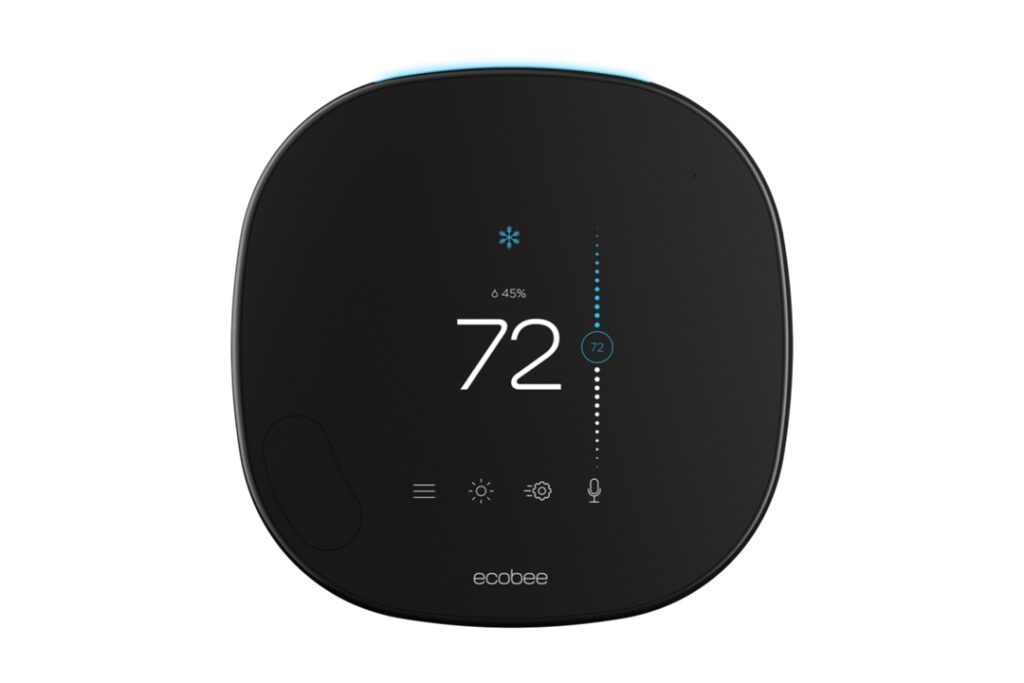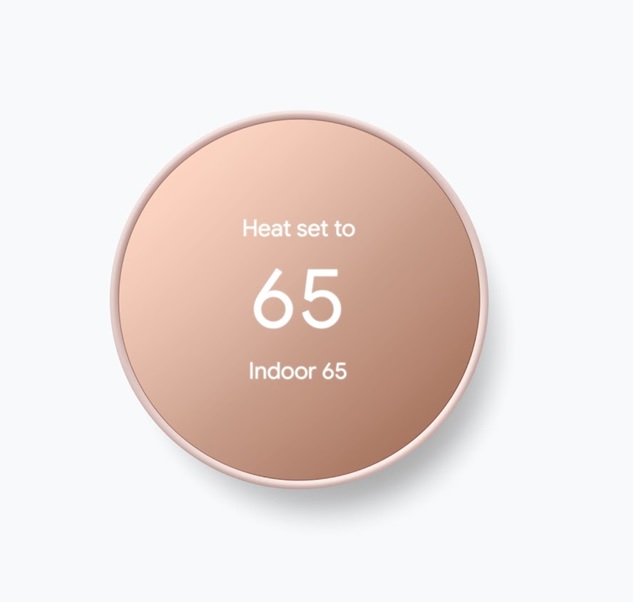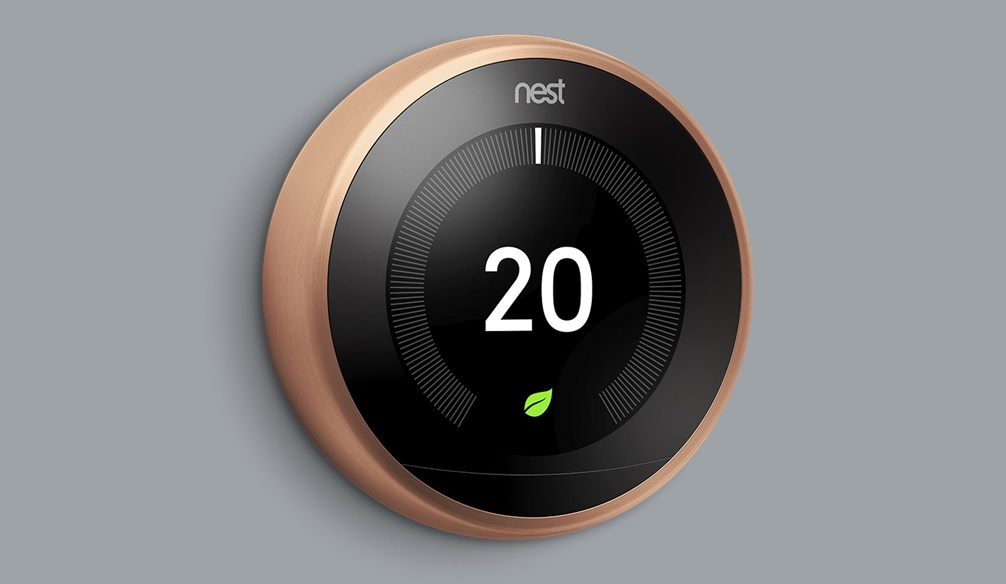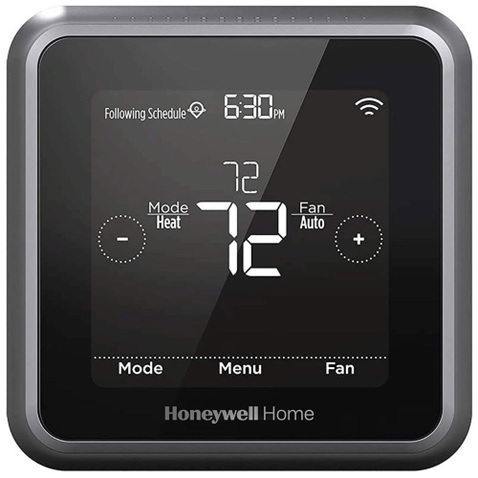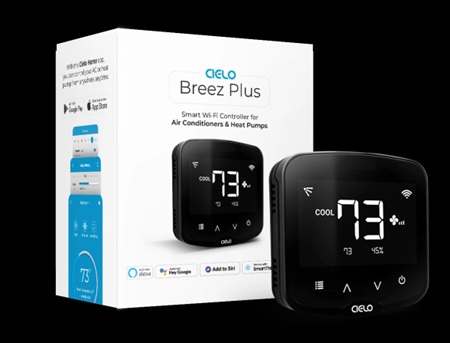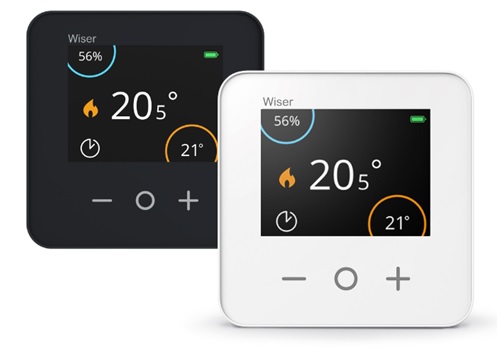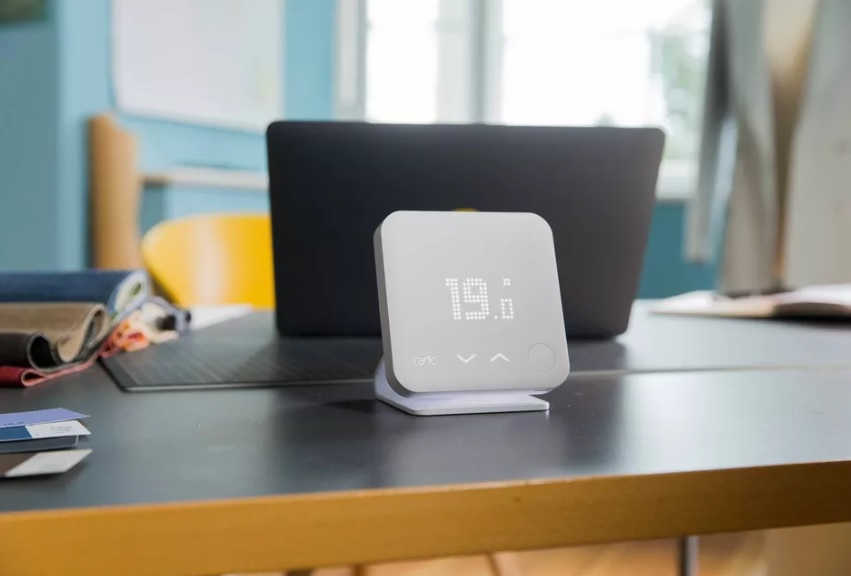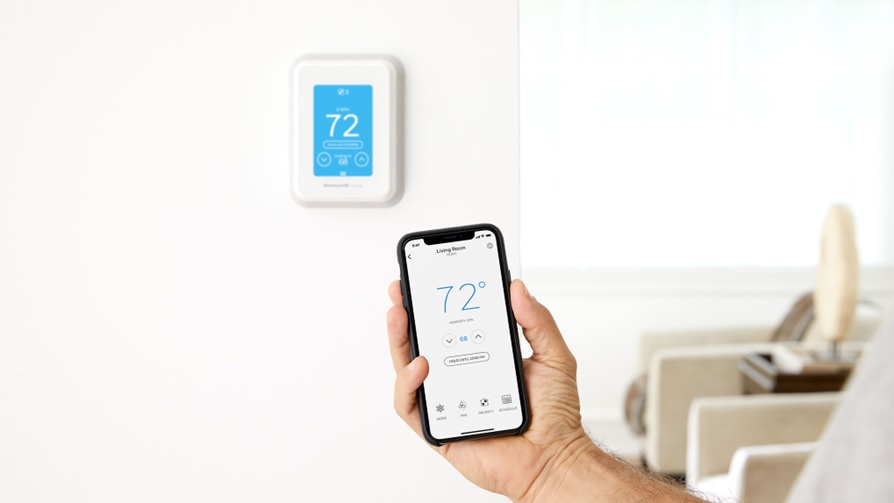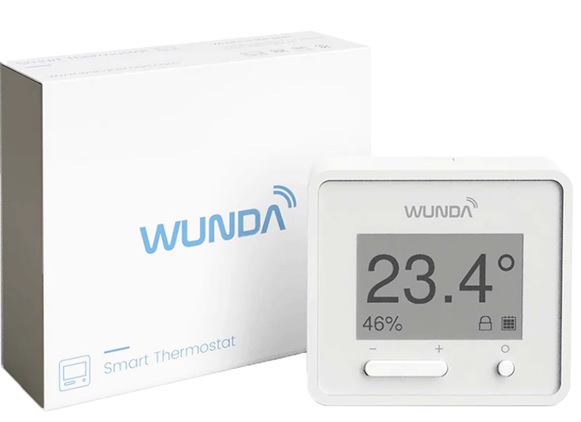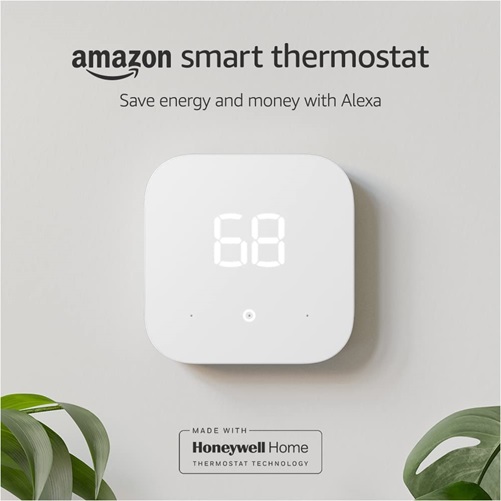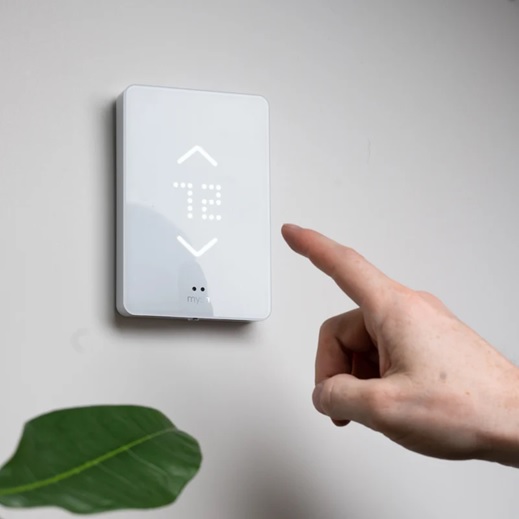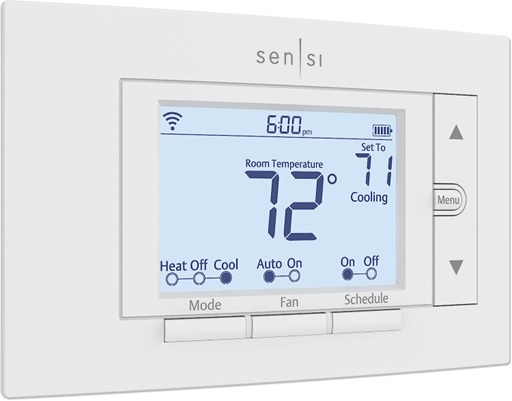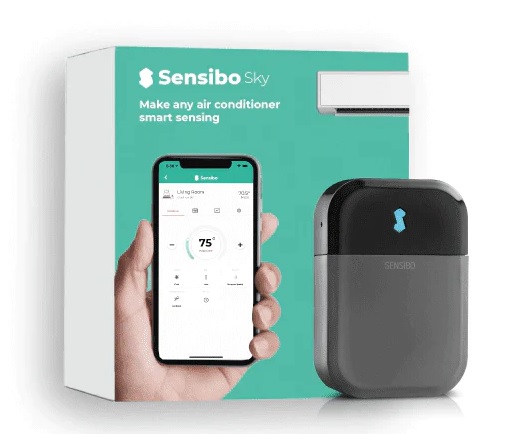
Did you know that heating and cooling account for nearly 50% of the average household’s energy expenses? According to the U.S. Department of Energy (DOE), traditional thermostats often fall short of providing the precise control needed to optimize comfort while minimizing energy waste.
However, the rise of smart thermostats has revolutionized how we manage our home’s temperature. In fact, a study by the National Institute of Standards and Technology (NIST) found that households using smart thermostat experienced an average energy savings of 10-15%, translating to significant cost reductions on utility bills.
By leveraging advanced technology, connectivity, and intelligent algorithms, smart thermostats empower homeowners like You to achieve the perfect balance between comfort, energy efficiency, and convenience. Be Rest assured that within this article, you will uncover valuable insights that will guide you toward selecting the perfect smart thermostat for your home.
Table of Contents
The Increasing Popularity and Demand for Smart Thermostats
It’s no surprise that the demand for smart thermostats has skyrocketed in recent years. As people become more conscious of their environmental impact and seek energy-efficient solutions, smart thermostats effectively contribute to sustainability efforts while enjoying enhanced comfort. The market has responded to this growing demand, offering various smart thermostat options from various manufacturers, each with unique features and advantages.
In the following sections, we will explore the top 15 smart thermostats available today, delving into their features, pros, and cons. Whether you’re looking for an entry-level option, a budget-friendly choice, or a thermostat compatible with popular voice assistants like Google Home or Alexa, this comprehensive guide will help you make an informed decision and find the perfect smart thermostat to elevate your home’s comfort and energy efficiency.
What is a Smart Thermostat?
A smart thermostat is a device that goes beyond the functionality of traditional thermostats. It leverages advanced technology, such as sensors, artificial intelligence, and connectivity, to intelligently regulate the temperature of a home or building. Smart thermostats offer a range of features and capabilities that give homeowners unprecedented control, convenience, and energy efficiency.
Unlike conventional thermostats that require manual adjustments, smart thermostats automate temperature control based on various factors such as occupancy, time of day, and weather conditions. They continuously learn and adapt to user preferences, ensuring optimal comfort while minimizing energy waste.
Features and Capabilities of Smart Thermostats
Here are some standard features you can expect to find:
- Learning Abilities: Smart thermostats can learn your schedule and preferences over time. They adapt to your routine, automatically adjusting temperature settings to ensure comfort at home and conserving energy when you’re away.
- Remote Control: With the help of smartphone applications, smart thermostats allow you to control and monitor your home’s temperature remotely. Whether at work, on vacation, or simply in another room, you can easily adjust settings to create the perfect environment before you arrive.
- Connectivity and Integration: Many smart thermostats connect to Wi-Fi networks, enabling seamless integration with other smart devices in your home. They can interact with voice assistants like Alexa or Google Home, providing hands-free control and further enhancing convenience.
- Energy Usage Insights: Smart thermostats provide detailed insights into energy consumption, allowing you to track usage patterns and make informed decisions to reduce energy waste and lower utility bills.
The Benefits of Switching to Smart Thermostats
Transitioning from traditional thermostats to smart thermostats is essential for the following reasons:
- Enhanced Comfort: Smart thermostats offer precise temperature control and the ability to create customized schedules. This ensures that your home is always at the desired temperature, providing optimal comfort for you and your family.
- Convenience: The convenience of remotely controlling your thermostat cannot be overstated. Whether you’re lying in bed, stuck in traffic, or away on vacation, you can effortlessly adjust the temperature to your liking with a few taps on your smartphone. They also integrate with voice assistants for hands-free control and can be programmed to align with daily routines.
- Energy Savings: Smart thermostats are designed to maximize energy efficiency. Adapting to your schedule and preferences avoids unnecessary heating or cooling, leading to significant energy savings. In the long run, this translates into lower utility bills and a reduced carbon footprint.
- Cost Savings: With their energy-saving capabilities, smart thermostats help homeowners save on heating and cooling costs in the long run. They also qualify for potential utility rebates or incentives.
- Sustainability: By reducing energy consumption and promoting efficient HVAC operation, smart thermostats contribute to a more sustainable lifestyle. They help minimize carbon footprint and support environmental conservation efforts.
15 Best Smart Thermostats on Our List
Here are the 15 best smart thermostats making waves in the market. From advanced features and energy-saving capabilities to seamless integration with smart home ecosystems, these thermostats have the potential to transform your living space.
- Ecobee Smart Thermostat
- Google Nest Thermostat
- Nest Learning Thermostat
- Honeywell Lyric T5
- Cielo Breez Plus Smart AC Controller
- Drayton Wiser
- Tado Smart Thermostat V3+
- Honeywell Home T9
- WundaSmart Room Thermostat
- Amazon Smart Thermostat
- Mysa Smart Thermostat
- Lux GEO-WH Wi-Fi Thermostat
- Emerson Sensi
- Wyze Smart Thermostat
- Sensibo Sky Smart Air Conditioner Controller
Each of the 15 thermostats on our list brings something unique to the table. In the following sections, we will explore these thermostats in detail, uncovering their features, compatibility, pros and cons, and more.
The Ecobee SmartThermostat combines a sleek design with advanced functionality. It offers features such as voice control, occupancy detection, remote access, energy reports, and compatibility with multiple smart home platforms. The Ecobee smart thermostat provides ultimate convenience and efficiency with its intuitive interface and energy-saving capabilities
Features
- Voice control with built-in Amazon Alexa
- Room sensors for occupancy detection and temperature monitoring
- Energy-saving features like eco+ and scheduling
- Compatibility with most heating, cooling, and heat pump systems
- Smart recovery and maintenance reminders
- Wi-Fi connectivity for remote control via the ecobee mobile app
- Smart home integration with Apple HomeKit, Google Assistant, Samsung SmartThings, and more
- Weight: 1.35 pounds
Pros:
- Intuitive user interface
- Energy-saving features
- Compatibility with multiple smart home platforms
Cons:
- Higher price compared to some competitors
- Installation may require professional assistance for some users
The Google Nest Thermostat stands out for its simplicity and convenience. Energy-saving algorithms, intuitive app controls, and compatibility with Google Assistant allow for effortless temperature management. Its seamless integration with the Google ecosystem makes it a popular choice for those seeking a smart thermostat with a user-friendly experience.
Features
- Smart learning capabilities for personalized temperature control
- Energy-saving suggestions and eco mode
- Compatibility with most 24V heating and cooling systems
- Remote control and scheduling through the Google Home app
- Voice control with Google Assistant
- Display with touch controls and ambient light sensors
- Weight: 0.26 pounds
Pros:
- Seamless integration with the Google ecosystem
- Energy-saving algorithms
- User-friendly app controls
Cons:
- Limited compatibility with non-Google smart home platforms
- Lack of advanced customization options
The Nest Learning Thermostat takes smart thermostats to the next level with its advanced learning capabilities. Using self-learning algorithms, it adapts to your preferences and creates personalized schedules to optimize energy usage. With compatibility with other smart devices and energy-saving suggestions, the Nest Learning Thermostat offers a comprehensive solution for efficient home temperature control.
Features
- Auto-schedule feature learns your preferred temperature settings
- Energy-saving suggestions and eco mode
- Works with most 24V heating and cooling systems
- Remote control and scheduling via the Nest app
- Compatibility with voice assistants like Google Assistant and Amazon Alexa
- High-resolution colour display with touch controls
- Weight: 1 pound
Pros:
- Advanced learning capabilities for personalized temperature control
- Energy-saving suggestions and reports
- Integration with other smart devices
Cons:
- Higher price point compared to entry-level models
- Compatibility limitations with specific HVAC systems
The Honeywell Lyric T5 is a budget-friendly smart thermostat that doesn’t compromise on features. It offers programmable scheduling, geofencing, and compatibility with voice assistants like Alexa and Google Assistant. With its affordable price and reliable performance, the Honeywell Lyric T5 is a popular choice for those looking to upgrade to a smart thermostat on a budget.
Features
- Geofencing technology for automatic temperature adjustments based on your location
- Smart alerts and notifications for filter changes and extreme temperatures
- Adaptive recovery to reach desired temperatures efficiently
- Compatibility with most heating, cooling, and heat pump systems
- Works with voice assistants like Amazon Alexa and Google Assistant
- Simple installation and setup with the Lyric app
- Weight: 0.45 pounds
Pros:
- Budget-friendly price
- Programmable scheduling
- Compatibility with voice assistants
Cons:
- Limited advanced features compared to higher-end models
- Some users may experience connectivity issues
The Cielo Breez Plus Smart AC Controller is designed to transform your existing air conditioner into a smart device. It offers features like temperature scheduling, energy-saving recommendations, and compatibility with voice assistants such as Alexa and Google Assistant. With its easy installation and compatibility with various AC models, the Cielo Breez Plus offers a cost-effective way to make your air conditioner smart.
Features
- Air conditioning control and scheduling via the smartphone app
- Intelligent climate control with comfort presets and timers
- Compatibility with various types of air conditioners and heat pumps
- Works with voice assistants like Amazon Alexa and Google Assistant
- Energy-saving features such as usage reports and scheduling optimizations
- Wi-Fi connectivity and smart home integration
- Weight: 0.34 pounds
Pros:
- An affordable way to make existing AC units smart
- Temperature scheduling and energy-saving recommendations
- Compatibility with voice assistants
Cons:
- Limited compatibility with non-AC heating systems
- The app interface could be more intuitive
The Drayton Wiser smart thermostat offers simplicity and efficiency. With its easy-to-use interface, intelligent scheduling, and compatibility with voice assistants, it provides effortless control over your home’s heating system. The Drayton Wiser’s modular design allows for expandability, making it a flexible choice for homes of all sizes.
Features
- Multi-room control and zoning for personalized comfort in each area
- Smart scheduling and automation based on occupancy and temperature
- Energy monitoring and reporting to track usage and identify savings opportunities
- Compatibility with different heating systems (boilers, underfloor heating, etc.)
- Works with voice assistants like Amazon Alexa and Google Assistant
- Intuitive mobile app for easy control and setup
- Weight: 0.29 pounds
Pros:
- Easy-to-use interface
- Intelligent scheduling for efficient heating control
- Compatibility with voice assistants
Cons:
- Limited availability in certain regions
- It may require additional components for full functionality
The Tado Smart Thermostat V3+ is designed to maximize comfort and energy savings. It features geofencing, adaptive temperature control, and compatibility with voice assistants like Alexa and Google Assistant. With its multi-room control capabilities and integration with smart home platforms, the Tado Smart Thermostat V3+ offers a comprehensive solution for efficient climate control.
Features
- Open Window Detection to prevent energy waste
- Geofencing and smart scheduling for automatic temperature adjustments
- Multi-room control with additional Smart Radiator Thermostats
- Works with popular voice assistants like Amazon Alexa, Google Assistant, and Apple HomeKit
- Energy-saving insights and reports to monitor and optimize energy usage
- Remote control and monitoring through the Tado app
- Weight: 0.26 pounds
Pros:
- Geofencing and adaptive temperature control for optimized comfort and energy savings
- Multi-room control capabilities
- Integration with voice assistants
Cons:
- The relatively higher price point
- Setup may require technical knowledge for some users
The Honeywell Home T9 smart thermostat offers precise temperature control and advanced features. Its room sensors for temperature zoning, geofencing, and voice assistant compatibility, provide a personalized and convenient experience. The Honeywell Home T9’s intuitive app and energy-saving capabilities make it a top choice for those seeking optimal comfort and efficiency.
Features
- Room Sensor for precise temperature control in specific areas
- Adaptive temperature control with temperature and humidity sensing
- Geofencing and smart scheduling for personalized comfort and energy efficiency
- Compatibility with most heating, cooling, and heat pump systems
- Works with voice assistants like Amazon Alexa and Google Assistant
- Intuitive mobile app with an easy-to-use interface and setup process
- Weight: 0.53 pounds
Pros:
- Room sensors for temperature zoning
- Geofencing and voice control capabilities
- Intuitive app interface
Cons:
- Higher price compared to basic smart thermostats
- Limited compatibility with non-Honeywell smart home systems
The WundaSmart Room Thermostat is designed specifically for underfloor heating systems. It offers precise temperature control, energy monitoring, and compatibility with voice assistants. With its sleek design and easy installation, the WundaSmart Room Thermostat enhances the comfort and efficiency of underfloor heating systems.
Features
- Energy-saving features like scheduling and temperature preset
- Compatibility with most HVAC systems (gas, electric, dual fuel)
- Remote control and monitoring through the Ecobee app
- Works with voice assistants like Amazon Alexa and Google Assistant
- Smart recovery to reach desired temperatures on time
- Intuitive interface with the touchscreen display
- Weight: 0.65 pounds
Pros:
- Designed specifically for underfloor heating systems
- Precise temperature control
- Compatibility with voice assistants
Cons:
- Limited compatibility with non-underfloor heating systems
- Relatively fewer advanced features compared to some competitors
The Amazon Smart Thermostat, designed with affordability and convenience in mind, offers basic smart thermostat features. With compatibility with Alexa, easy setup, and temperature schedule, it provides a simple and accessible smart thermostat option for those just starting to explore the benefits of home automation.
Features
- Alexa integration for voice control and smart home integration
- Energy-saving features like temperature scheduling and eco mode
- Compatibility with most HVAC systems (gas, oil, electric)
- Works with Alexa-enabled devices for remote control and voice commands
- User-friendly interface with temperature display and touch controls
- Easy installation and setup with the Alexa app
- Weight: 0.55 pounds
Pros:
- An affordable option for basic smart thermostat functionality
- Easy setup and integration with Alexa
- Temperature scheduling capabilities
Cons:
- Limited features compared to higher-end models
- It may have compatibility limitations with certain HVAC systems
The Mysa Smart Thermostat is specifically designed for electric heating systems. It offers temperature scheduling, monitoring energy usage, and compatibility with voice assistants. With its elegant design and precise control over electric heating, the Mysa Smart Thermostat provides an efficient and stylish solution for electrically heated homes.
Features
- Electric heating control for baseboard heaters and high-voltage systems
- Energy-saving modes and scheduling options
- Room-specific temperature control with temperature sensors
- Intuitive mobile app for remote control and monitoring
- Compatibility with voice assistants like Amazon Alexa and Google Assistant
- Modern and minimalist design with touch controls
- Weight: 0.41 pounds
Pros:
- Geofencing and adaptive temperature control for optimized comfort and energy savings
- Multi-room control capabilities
- Integration with voice assistants
Cons:
- Limited compatibility with non-electric heating systems
- Some users may experience connectivity issues.
The Lux GEO-WH Wi-Fi Thermostat combines simplicity and versatility. It offers programmable scheduling, geofencing, and compatibility with voice assistants like Alexa and Google Assistant. With its easy installation and user-friendly interface, the Lux GEO-WH Wi-Fi Thermostat is a reliable choice for those seeking an affordable and feature-rich smart thermostat.
Features
- Geofencing for automatic temperature adjustments based on your location
- Smart scheduling and energy-saving features like setback modes
- Works with most heating and cooling systems (gas, oil, electric)
- User-friendly interface with touch controls and colour display
- Easy installation and setup with the Lux GEO app
- Wi-Fi connectivity for remote control and monitoring
- Weight: 0.60 pounds
Pros:
- Affordable price point
- Programmable scheduling and geofencing features
- Compatibility with voice assistants
Cons:
- Limited advanced features compared to higher-end models
- The app interface could be more user-friendly
The Emerson Sensi smart thermostat offers a balance of affordability and performance. Its intuitive app controls, compatibility with voice assistants, and energy-saving features provide a seamless smart home experience. The Emerson Sensi’s straightforward installation process and broad HVAC system compatibility make it a popular choice for homeowners.
Features
- Energy-saving modes and flexible scheduling options
- Smart alerts and notifications for system performance and maintenance
- Geofencing for automatic temperature adjustments when you’re away
- Compatibility with most HVAC systems (gas, oil, electric)
- Works with voice assistants like Amazon Alexa and Google Assistant
- User-friendly mobile app for remote control and scheduling
- Weight: 0.70 pounds
Pros:
- An affordable option with reliable performance
- Intuitive app controls and energy-saving features
- Compatibility with voice assistants
Cons:
- Limited advanced features compared to premium models
- Some users may experience connectivity issues
The Wyze Smart Thermostat offers a combination of affordability and smart features. Its intuitive app, compatibility with voice assistants, and energy usage tracking allows for convenient and efficient temperature control. The Wyze Smart Thermostat’s budget-friendly price and reliable performance make it an attractive option for those on a tight budget.
Features
- Touchscreen display with intuitive controls and temperature settings
- Energy-saving features like scheduling and temperature preset
- Smart learning capabilities to adapt to your preferences
- Works with voice assistants like Amazon Alexa and Google Assistant
- Compatibility with most HVAC systems (gas, oil, electric)
- Affordable price point with advanced features
- Weight: 0.52 pounds
Pros:
- Budget-friendly price
- Intuitive app interface
- Energy usage tracking and scheduling capabilities
Cons:
- Limited compatibility with certain HVAC systems
- Advanced features may be limited compared to higher-end models
The Sensibo Sky Smart Air Conditioner Controller is designed to make your air conditioner smarter and more energy-efficient. It offers features such as remote control, geofencing, and compatibility with voice assistants. The Sensibo Sky Smart Air Conditioner Controller provides enhanced convenience and energy savings with its easy setup and seamless integration with existing AC units.
Features
- AI-powered scheduling for optimal comfort and energy savings
- Climate react feature for automatic adjustments based on temperature and humidity
- Works with various air conditioner systems and brands
- Smart home integration with voice assistants like Amazon Alexa and Google Assistant
- Wi-Fi connectivity for remote control and monitoring
- Easy installation and setup through the Sensibo app
- Weight: 0.33 pounds
Features
Pros:
- Turns existing AC units into smart devices
- Remote control and geofencing capabilities
- Compatibility with voice assistants
Cons:
- Limited compatibility with non-AC heating systems
- The app interface could be more user-friendly.
How Do Smart Thermostats Work?
The Underlying Technology behind Smart Thermostats
Smart thermostats incorporate advanced technology to achieve precise and efficient temperature control.
The key components of their operation include:
- Sensors: Smart thermostats are equipped with various sensors to gather data and make informed decisions. Smart thermostats can adjust settings based on the current conditions by collecting and analyzing data from these sensors.
- Connectivity: Smart thermostats connect to your home’s Wi-Fi network or other communication protocols like Bluetooth or Zigbee. This connectivity enables seamless communication between the thermostat, your smartphone or tablet, and other smart devices in your home.
- Algorithms and Artificial Intelligence: Smart thermostats employ complex algorithms and artificial intelligence to analyze data from sensors and user interactions. These algorithms learn your preferences, routines, and the characteristics of your home to optimize temperature control. They can also consider external factors like weather forecasts to make proactive adjustments.
The Connectivity Options and Compatibility
Smart thermostats offer various connectivity options to ensure compatibility with different home automation systems and enable seamless control.
The most common connectivity options are:
- Wi-Fi: Wi-Fi connectivity allows smart thermostats to connect to your home network, granting access to remote control and monitoring capabilities.
- Bluetooth: Some smart thermostats utilize Bluetooth technology for short-range wireless communication.
- Zigbee or Z-Wave: Smart thermostats that support Zigbee or Z-Wave can seamlessly integrate with other devices and create a comprehensive smart home ecosystem.
Compatibility with home automation systems is an essential aspect of smart thermostats. They often integrate with popular platforms like Google Home, Amazon Alexa, and Apple HomeKit.
How to Install a Smart Thermostat Yourself
Installing a smart thermostat is generally a straightforward process that homeowners themselves can do. The installation steps may vary slightly depending on your home’s specific thermostat model and HVAC system. However, the following overview will give you a general idea of the installation process.
Factors to consider before attempting self-installation
Before attempting to install a smart thermostat yourself, there are a few factors to consider:
Compatibility: Ensure that the smart thermostat you intend to install is compatible with your HVAC system. Check the thermostat’s specifications and compare them with your existing system to ensure a proper fit.
Wiring Compatibility: Smart thermostats may require a “C” wire (common wire) for power. Check if your current thermostat has a “C” wire or if your HVAC system has an available “C” wire connection. If not, you may need to consider alternative power options or consult a professional.
Skill Level and Confidence: Assess your DIY skills and comfort level with electrical work. If you need more confidence in your abilities or are unfamiliar with electrical systems, seeking professional installation assistance may be wise.
Step-by-Step Instructions for a Typical Self-Installation Process
While the specific steps may vary, here is a general outline of the typical self-installation process for a smart thermostat:
- Turn off Power: Turn off the power to your HVAC system at the circuit breaker to ensure safety during installation.
- Remove Existing Thermostat: Carefully remove the cover of your current thermostat and unscrew it from the wall mounting plate. Take note of the existing wiring connections and labeling.
- Label Wires: If your current thermostat doesn’t have labeled wires, use masking tape or stickers to label each wire according to its terminal connection (e.g., R, G, Y, W, C). This step will help during the installation of the new thermostat.
- Mount the New Thermostat: Attach the new thermostat’s wall mounting plate to the wall using screws or adhesive, following the manufacturer’s instructions. Ensure that it is level and securely mounted.
- Connect the Wires: Connect the labeled wires from your HVAC system to the corresponding terminals on the new thermostat’s mounting plate. Follow the manufacturer’s wiring diagram or the installation guide for proper connections.
- Install the Thermostat: Align the new thermostat with the mounting plate and secure it according to the manufacturer’s instructions. Make sure it sits flush against the wall.
- Restore Power: Turn the power back on at the circuit breaker for your HVAC system.
- Follow Setup Instructions: Follow the prompts on the thermostat’s display or refer to the manufacturer’s instructions to complete the initial setup and configuration process.
Remember, the installation process can vary depending on your HVAC system and the specific smart thermostat model you’re installing. Always refer to the manufacturer’s instructions and guidelines for detailed, model-specific installation steps to ensure a successful installation.
Buying Guide for Smart Thermostats
Factors to consider when buying a smart thermostat
When purchasing a smart thermostat, it’s essential to consider several factors to ensure you choose the right one for your needs.
Here are some key considerations:
- Compatibility: Check if the smart thermostat is compatible with your existing HVAC system. Not all thermostats work with every heating or cooling system.
- Installation: Consider the installation process. Some smart thermostats require professional installation, while others are designed for easy DIY installation.
- Connectivity: Look for smart thermostats that offer reliable and convenient connectivity options, such as Wi-Fi or Bluetooth, to control your thermostat remotely.
- Voice Assistant Integration: If you use voice assistants like Alexa or Google Assistant, make sure the smart thermostat is compatible and can be seamlessly integrated into your smart home ecosystem.
- Energy Efficiency Features: Check for energy-saving features like programmable scheduling, occupancy detection, and learning capabilities, which can help optimize energy usage and reduce costs.
- User-Friendly Interface: Consider the user interface and app controls. Look for intuitive interfaces and user-friendly mobile apps that make adjusting settings and monitoring energy usage easy.
Selecting the Best Smart Thermostat for Your Preferences
To help you find the ideal smart thermostat for your home, we have categorized the top 15 thermostats based on their unique features and benefits. Let’s explore each category and the reasons why these thermostats stand outibus leo.
Best Overall Performers
These thermostats excel in multiple areas, offering a comprehensive smart thermostat experience.
Ecobee Smart Thermostat
It is known for its advanced features like room sensors, energy reports, and compatibility with popular voice assistants.
Google Nest Thermostat
Offers a perfect balance of simplicity and intelligence, with features like learning capabilities and smart scheduling.
Nest Learning Thermostat
Adapts to your preferences over time, saving energy while providing personalized comfort.
Honeywell Home T9
It combines advanced sensors, geofencing, and smart alerts for precise temperature control and convenience.
User-Friendly and Easy to Install:
These thermostats are designed with simplicity and hassle-free installation in mind.
Honeywell Lyric T5
It provides straightforward installation and intuitive controls, making it an excellent choice for first-time users.
Emerson Sensi
Designed for easy DIY installation, it is compatible with various HVAC systems and offers a user-friendly mobile app.
Wyze Smart Thermostat
Easy to install and control via the Wyze app, with smart features like scheduling and energy usage insights.
Enhanced Energy Efficiency
These thermostats prioritize energy savings and help reduce utility bills.
Nest Learning Thermostat
Utilizes advanced learning algorithms to optimize temperature settings and reduce energy consumption.
Ecobee Smart Thermostat
Features occupancy detection, remote sensors, and detailed energy reports for precise energy management.
Honeywell Home T9
It offers intelligent features like geofencing and adaptive temperature control to maximize energy efficiency.
Seamless Integration with Smart Home Ecosystems
These thermostats effortlessly connect with other smart devices in your home.
Ecobee Smart Thermostat
Works with popular voice assistants, supports multiple smart home platforms, and enables smart home automation.
Google Nest Thermostat
Integrates seamlessly with Google Assistant and other Nest products, creating a unified smart home experience.
Tado Smart Thermostat V3+
It is compatible with various smart home ecosystems, including Google Assistant, Amazon Alexa, and Apple HomeKit
Budget-Friendly Options
These thermostats offer cost-effective solutions without compromising on essential features.
Honeywell Lyric T5
Affordable and easy to install, providing basic smart thermostat functionality at an accessible price point.
Cielo Breez Plus Smart AC Controller
Offers smart control for air conditioners at an affordable price, with features like scheduling and energy-saving modes.
Drayton Wiser
Provides a budget-friendly option for smart heating control, with customizable schedules and energy-saving features.
These categories reflect each smart thermostat’s standout features and benefits, allowing you to choose the one that best aligns with your specific needs and preferences. Remember that some thermostats may excel in multiple categories, providing a well-rounded, smart thermostat experience.
Conclusion
When choosing a smart thermostat, it’s crucial to consider your specific needs and preferences. By understanding your requirements, you can find a smart thermostat that aligns perfectly with your lifestyle and preferences.
Remember, each smart thermostat has its unique advantages, so take the time to evaluate and choose the one that best suits your requirements. Invest in a smart thermostat to enhance your daily life and contribute to a more comfortable, energy-efficient home.
FAQs
1. What exactly is a smart thermostat?
A smart thermostat is a device that allows you to control and automate your home’s heating and cooling system using advanced technology and internet connectivity. It provides features like remote control, scheduling, and energy-saving algorithms.
2. How does a smart thermostat work?
Smart thermostats use sensors and algorithms to monitor temperature, occupancy, and other variables to optimize comfort and energy efficiency. They connect to your home’s Wi-Fi network, allowing you to control and monitor them remotely through a mobile app or voice commands.
3. Can you install a smart thermostat yourself?
Many smart thermostats are designed for DIY installation and come with detailed instructions. However, the complexity of installation can vary depending on your HVAC system and wiring. Hiring a professional for installation is recommended if you need more clarification or are uncomfortable with electrical work.
4. What else can a smart thermostat do?
Besides temperature control, smart thermostats offer various additional features. These may include energy usage monitoring, learning capabilities, geofencing, compatibility with voice assistants, integration with other smart home devices, and the ability to create customized schedules for different times of the day or week.
